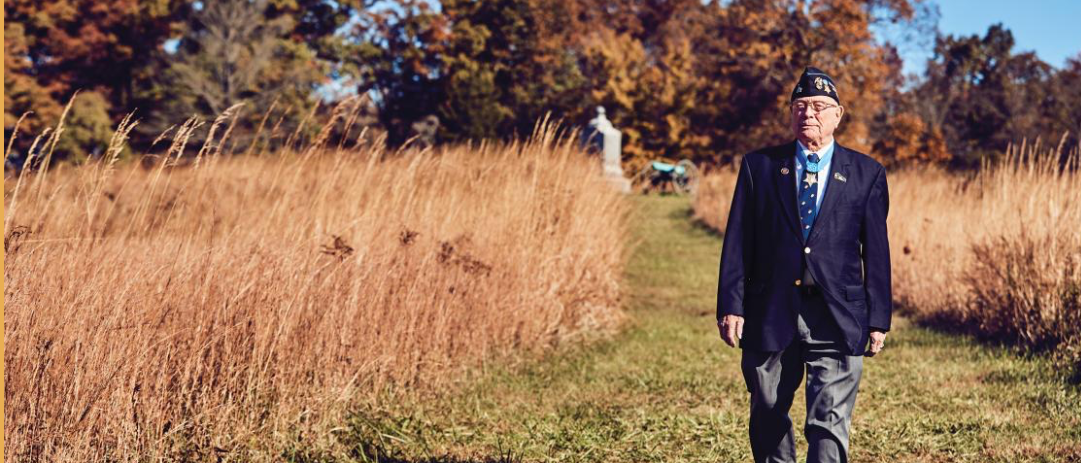
On February 23, 1945, six U.S. Marines raised the American flag atop Mount Suribachi in a moment captured on camera that became synonymous with the Marine Corps. One thousand yards away, demolition sergeant Hershel “Woody” Williams was a one-man fighting machine, destroying one Japanese pillbox after another in frenzy of combat that was so extraordinary, he was awarded the Congressional Medal of Honor.
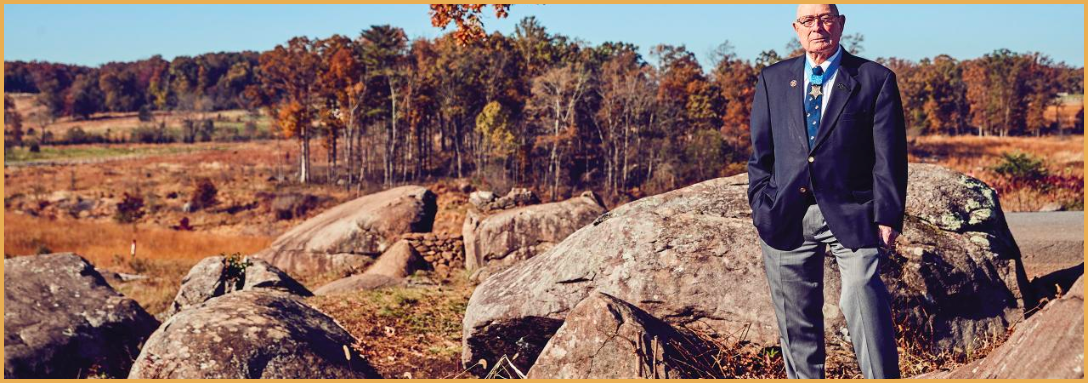
U.S. MARINE CORPS CORPORAL HERSHEL “WOODY” WILLIAMS, STANDING AT GETTYSBURG NATIONAL MILITARY PARK, WHERE 64 MEDALS OF HONOR WERE AWARDED AND THE TRUST HAS SAVED 1,040 ACRES. LIKE THE MEMBERS OF THE MEARS PARTY DURING THE CIVIL WAR, WILLIAMS VOLUNTEERED TO GO FORWARD AND CLEAR A CONCEALED ENEMY POSITION THAT WAS THREATENING HIS UNIT. WILLIAM HEREFORD
Williams, born on a West Virginia dairy farm in 1923, enlisted in the Marine Corps in May 1943 and fought at Guam in 1944 with the 21st Marines before they took part in the Battle of Iwo Jima. As American tanks tried to open a path from the beach through a dense network of Japanese concrete
pillboxes, Williams volunteered to go forward with his flamethrower, the most effective weapon to neutralize the reinforced pillboxes and their devastating machine gun fire. For four hours, Williams fought to silence the Japanese positions, covered only by four riflemen.
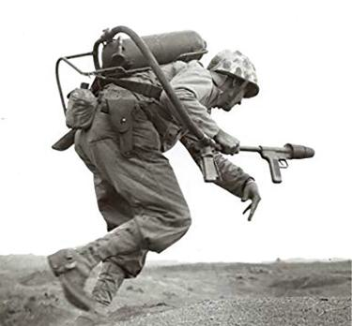
MARINE PHOTO OF WILLIAMS RUNNING WITH A FLAMETHROWER.
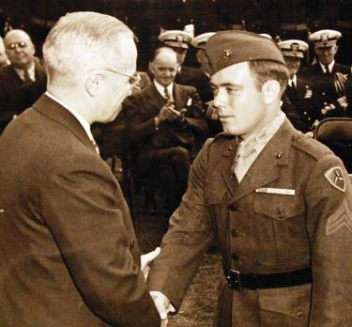
WILLIAMS RECEIVES THE MEDAL OF HONOR FROM PRESIDENT HARRY S. TRUMAN ON THE WHITE HOUSE LAWN.
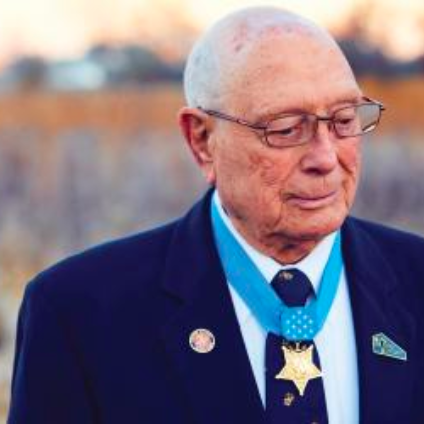
“Being at a battlefield where you know that individuals sacrificed their lives is a profound experience.”
He returned five times to his own lines for fresh flamethrowers and demolition charges before charging forward again. He mounted one pillbox, stuck the nozzle of his flamethrower through the air vent and blasted the occupants with a fatal burst of fire. In another desperate episode, enemy infantrymen charged him in a bayonet attack, but he managed to destroy them with his flamethrower. The combat was so fierce, Williams has no memory of much of it. But his courageous and selfless actions helped clear the way for the Marines to advance.
“We, as a country, can’t forget. We should never forget what their sacrifices have made possible.”
Williams remained on Iwo Jima throughout the five-week battle and was wounded by shrapnel on March 5. He returned to the United States on September 5 and was awarded the Medal of Honor by President Harry S Truman on October 5, 1945, at the White House. He served for many years in the Marine Corps Reserve and in 2010 helped found the non-profit Woody Williams Foundation to honor, recognize and serve Gold Star families and the legacy of their fallen loved ones. In March 2020, Williams attended the commissioning of the USS Hershel “Woody Williams Expeditionary Sea Base vessel in Norfolk, Virginia. Before his passing on June 29, 2022, he was the last surviving Medal of Honor recipient from World War II.
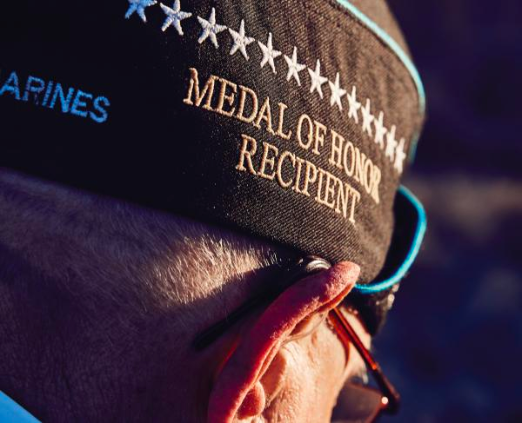
Modern portraiture by William Hereford